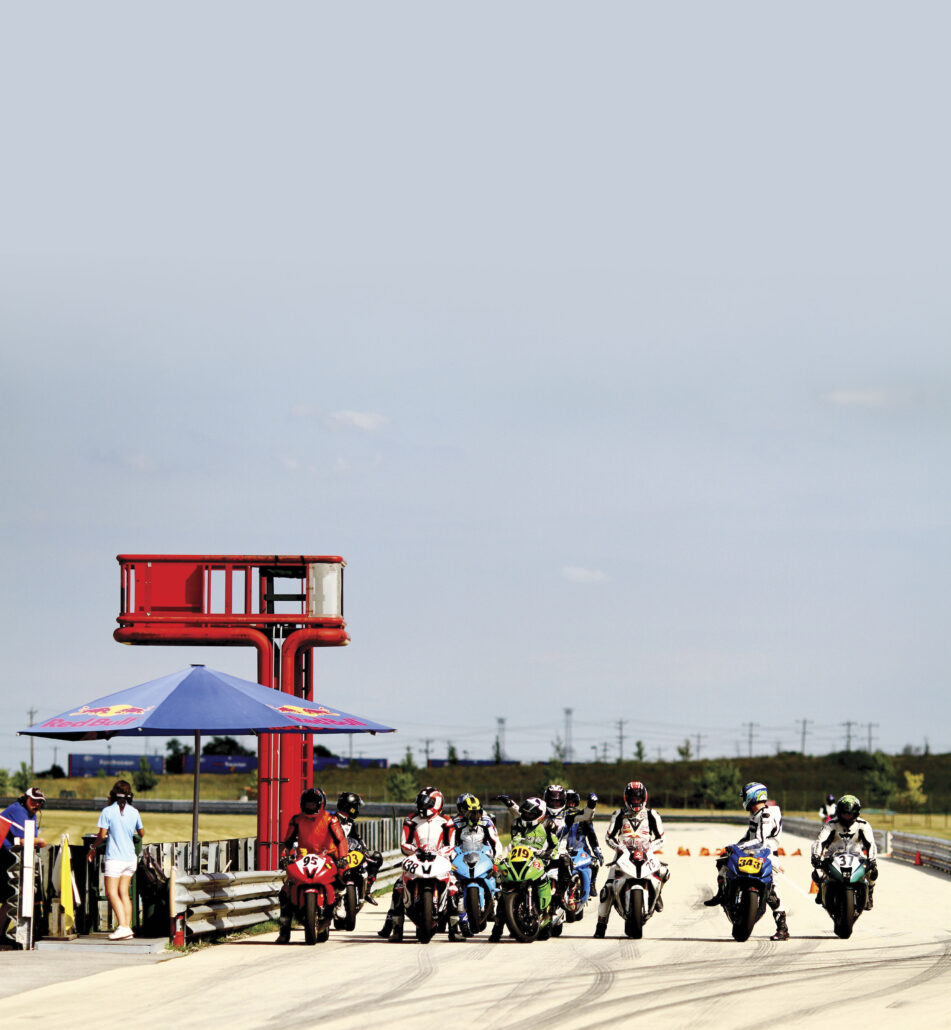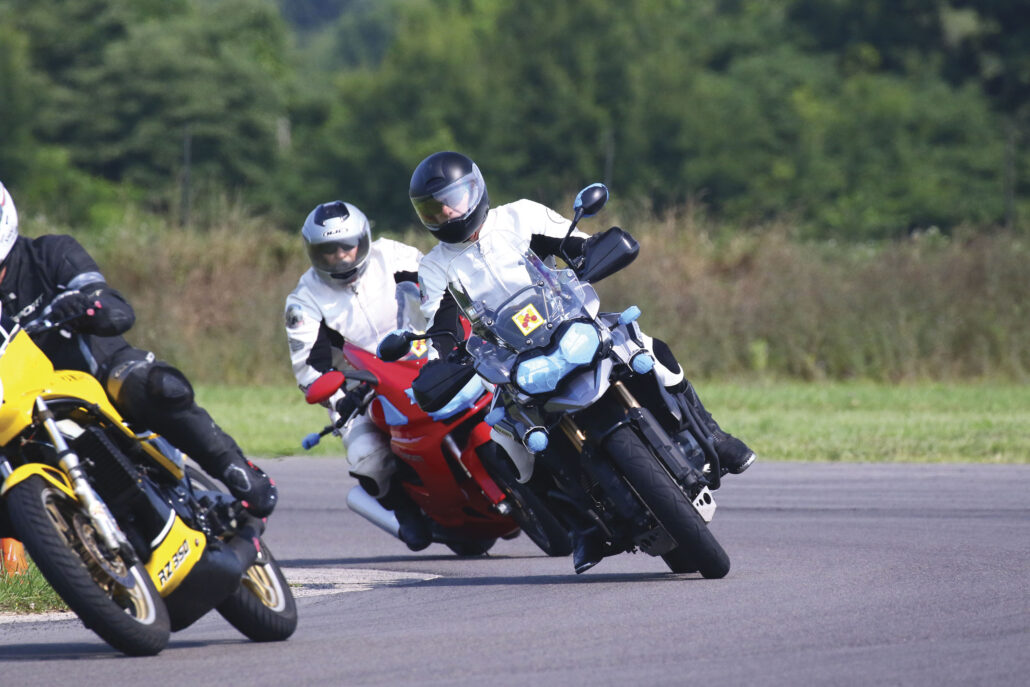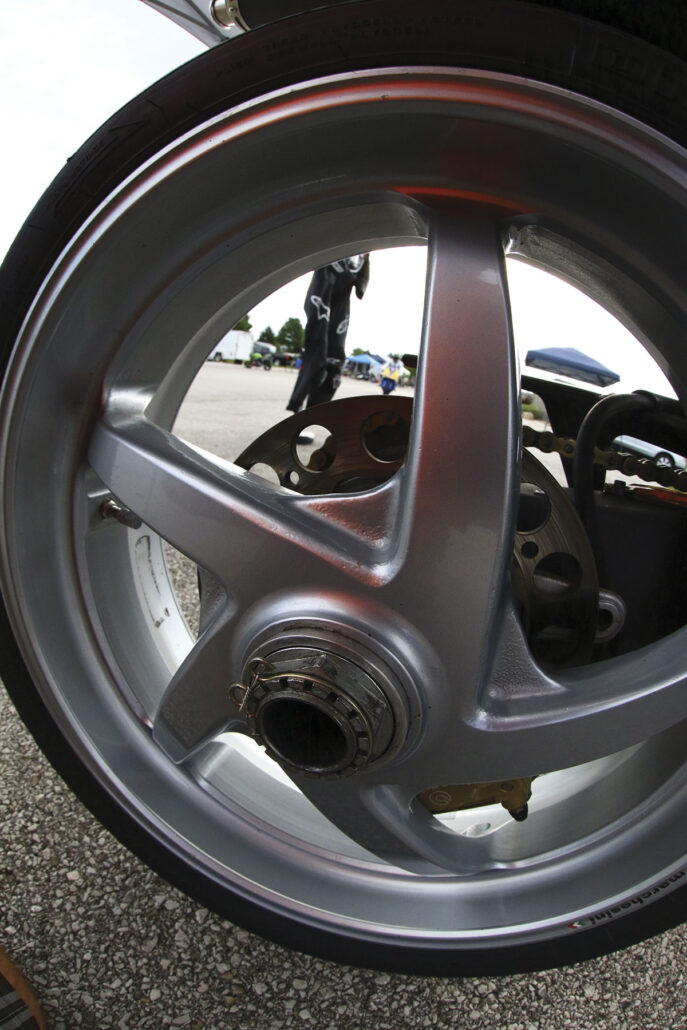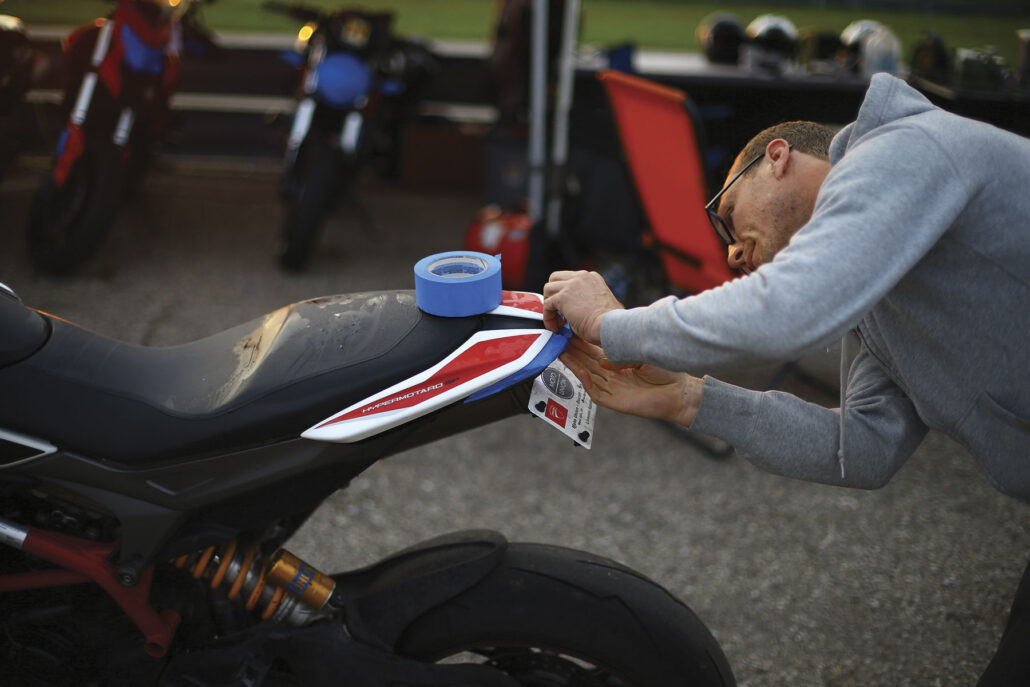AMERICAN MOTORCYCLIST June 2020
Getting on track
How To Prep Your Bike, Your Gear And Yourself For A Track Day

Photos by Joseph Hansen
You don’t have to become a road racer to get the thrill of riding on a road course.
Track days allow you to develop your road riding skills and find out just how smoothly and rapidly you can go without having to worry about oncoming traffic or getting pulled over, or battling for points.
Before you consider how to get your bike ready for a track day, you need to make sure you have the right gear.
Most track day organizers require participants to wear a full-face helmet, a one- or two-piece riding suit, boots that come up to about mid-calf and gloves with a gauntlet that protects a rider’s wrists.
C.J. Cohen, owner of the AMA-sanctioned Legacy Track Dayz and Riding School, recommends getting quality gear and a riding suit made of leather, even if it’s your first track day.
The helmet, gloves and boots are things every rider should plan to buy, even if they’re available for rent.
Cohen said renting leathers is a good option for beginners, but to plan on spending the time to get properly measured and try different brand suits on once you start doing track days regularly.
As for your bike, Cohen said almost any sport, sport touring or supermoto motorcycle is suitable for track day riding. He said smaller bikes—like supermoto machines or dirt bikes equipped with track day-worthy tires—are great for less-experienced riders and can make it easier to learn about proper corner entry.
Cohen suggested that riders make a bike checklist to make it less likely that something will get missed that could keep a rider from being cleared to go on track.
Like racing leathers, motorcycles are sometimes available for rent at track days.
With renting, you don’t have to spend time prepping your own bike and don’t have to tow your bike to the track.
However, if you crash, you may have to pay for damage to a bike you don’t own.
Cohen suggested that renting is a good option for new track day riders, but to seriously consider getting a dedicated track bike once you’ve learned the basics.
Participants need to be in good physical shape to get the most out of the experience.
Cohen said he’s had customers complain at the start of the day that they didn’t think a few 15-minute sessions would be enough time. But then he saw them sitting out late-afternoon sessions because of exhaustion.
Of all the preparation needed for a track day, Cohen emphasized that being mentally prepared is chief among them.
What’s most important is to leave your ego behind and allow yourself to be coached by the organizer’s staff.
Cohen said it takes time for instructors to break some of the bad habits riders develop from street riding, and track day newbies must be willing to trust the instruction they’re receiving.
 Getting your bike ready
Getting your bike ready
If you’re taking your street bike to the track or have bought a dedicated track day bike, you need to make sure your machine meets a track day organizer’s requirements.
Here are some of the common preparations you need to make to your bike before you head to the track. Organizer requirements vary, so check which preparations are required well in advance of your first track day.
• Coolant: Some track day organizers don’t allow you to run glycol-based coolant in your engine. The commonly-used, green-colored coolant is a very slick substance, and a crash that results in a coolant leak can spell the end of a track day for everyone if glycol-based coolant gets on the track surface. Consider running distilled water with a coolant additive when you do a track day.
• Side stand/center stand: Stands can limit ground clearance and drag when a bike is being cornered aggressively. Some organizers allow you to safety wire the stands in their “up” position, while other organizers require them to be removed. Either way, bring a rear stand or some other way of supporting your bike.
• Safety wire: Some organizations require participants to safety wire parts of their bikes, but it’s highly encouraged for all track day riders. Much like the coolant issue, an oil filter or oil drain plug that vibrates loose can end track time for everyone. Consider safety wiring any bolt, cap, or fastener that is part of something that contains fluid.
• Lights and mirrors: Take steps to make sure any glass on the bike doesn’t shatter in a crash. Common preparations include removing mirrors and turn signals, covering headlights with painter’s tape and removing the license plate.
• Tires: Make sure your motorcycle is equipped with DOT or track-only tires that are in good condition. Check each tire manufacturer’s recommendations about which of its models are suitable for track use.



